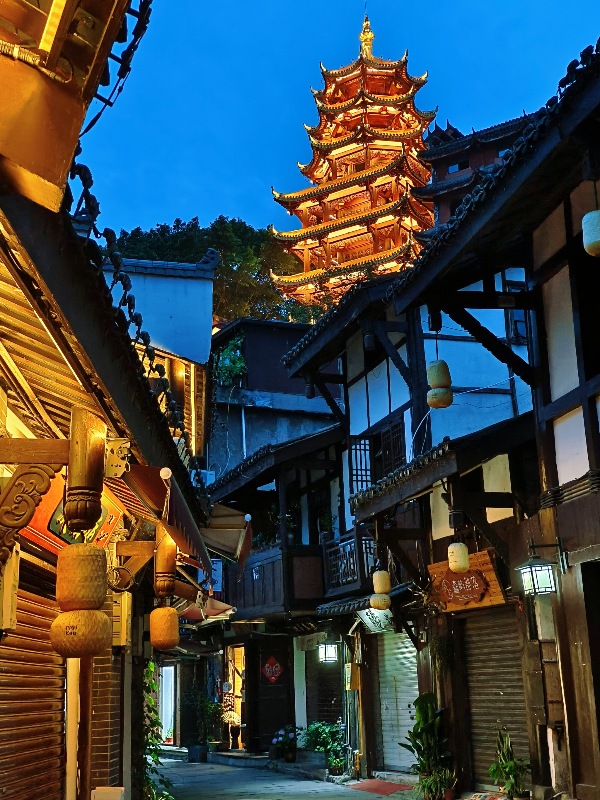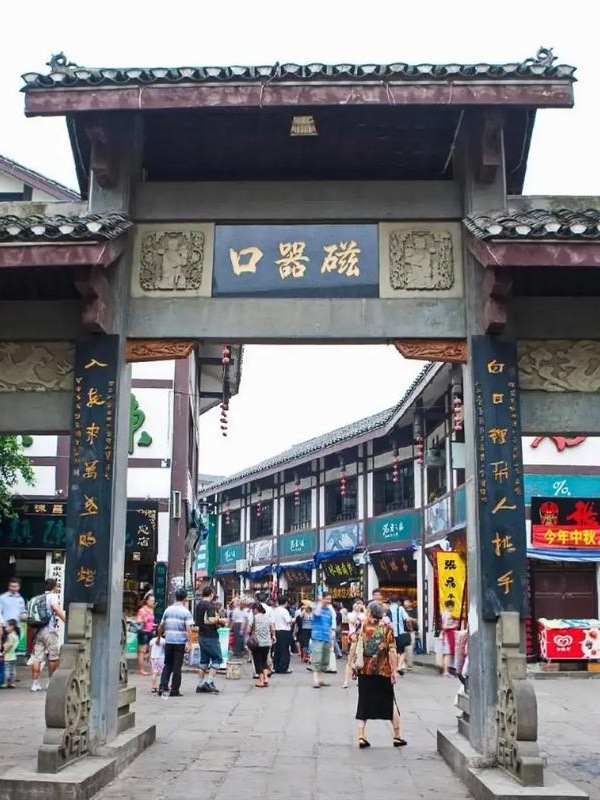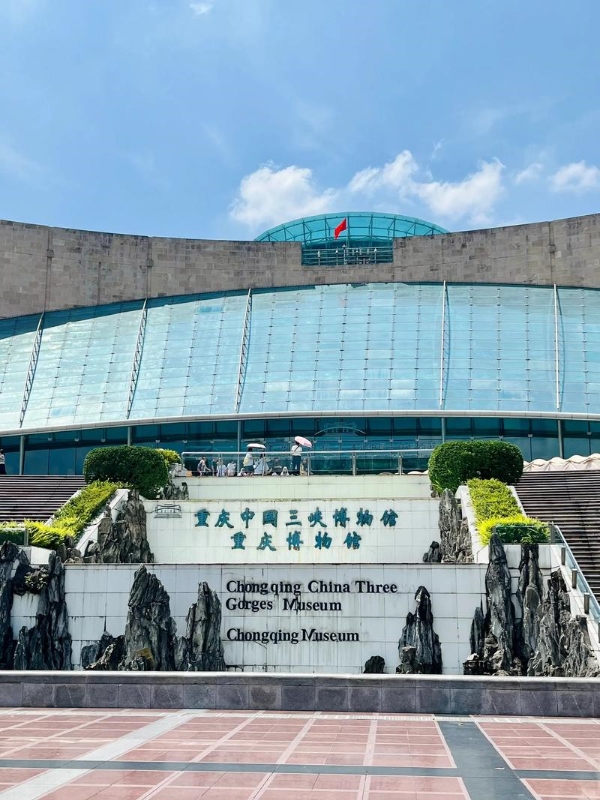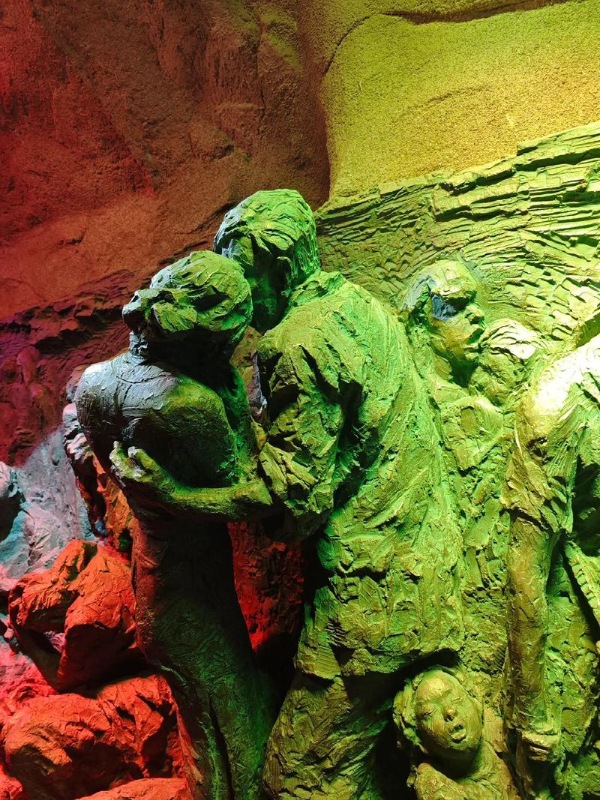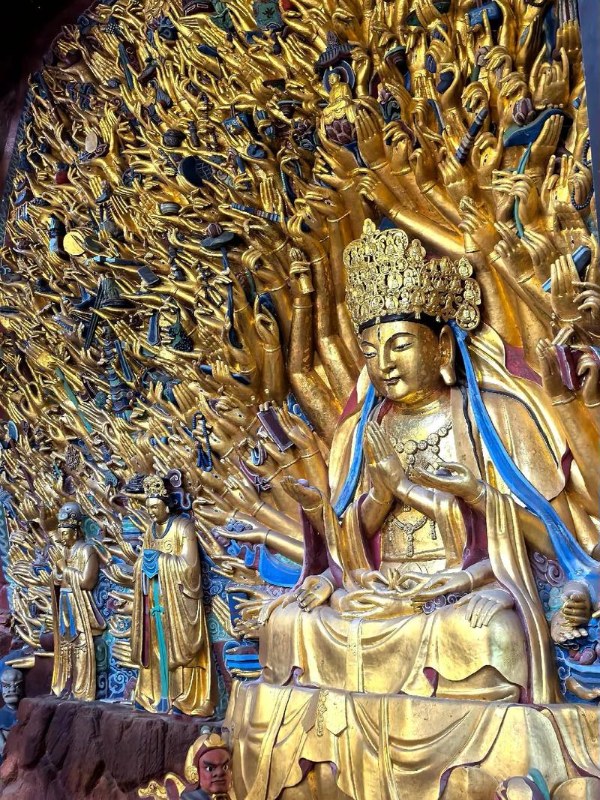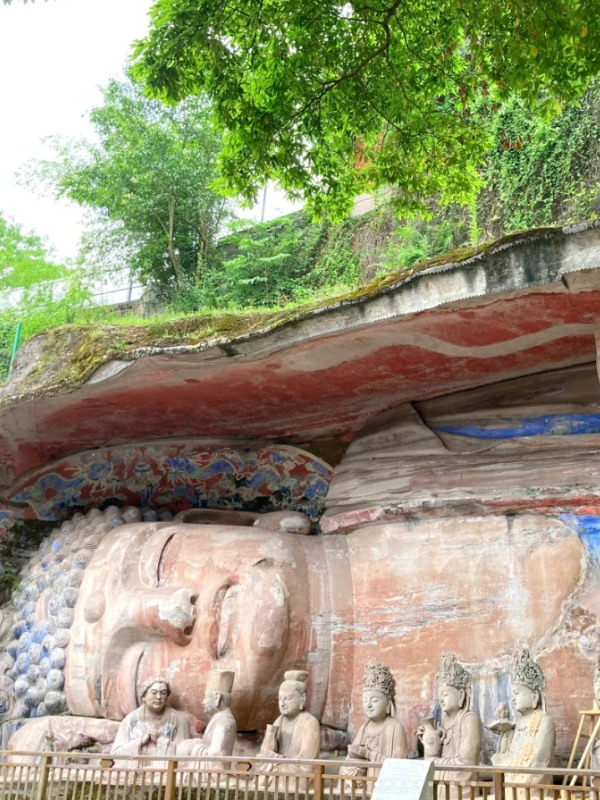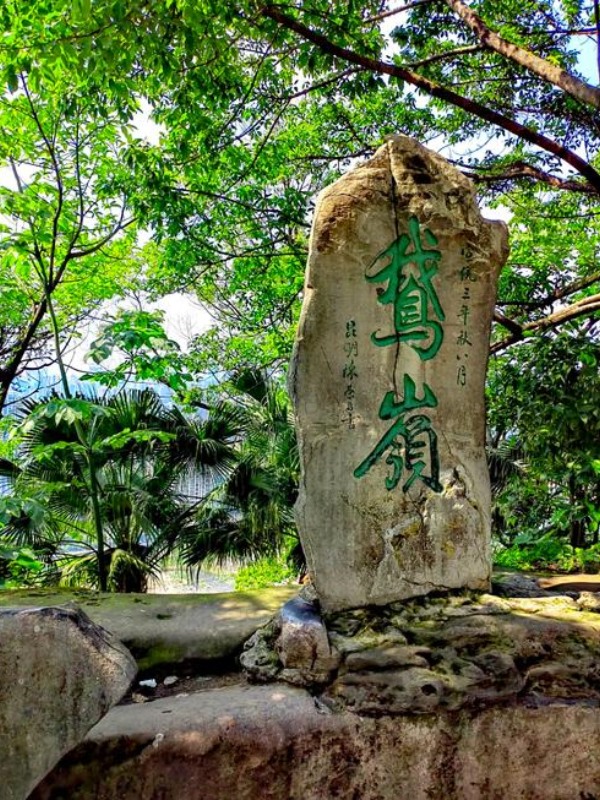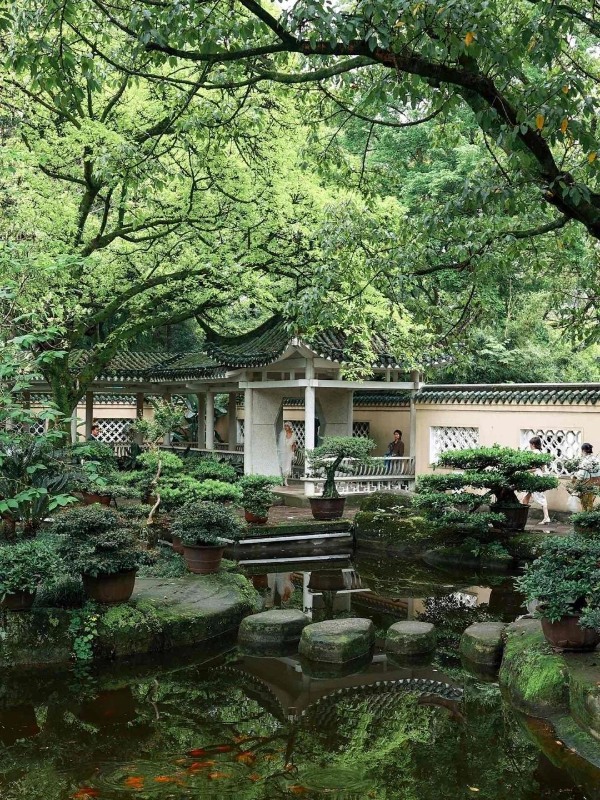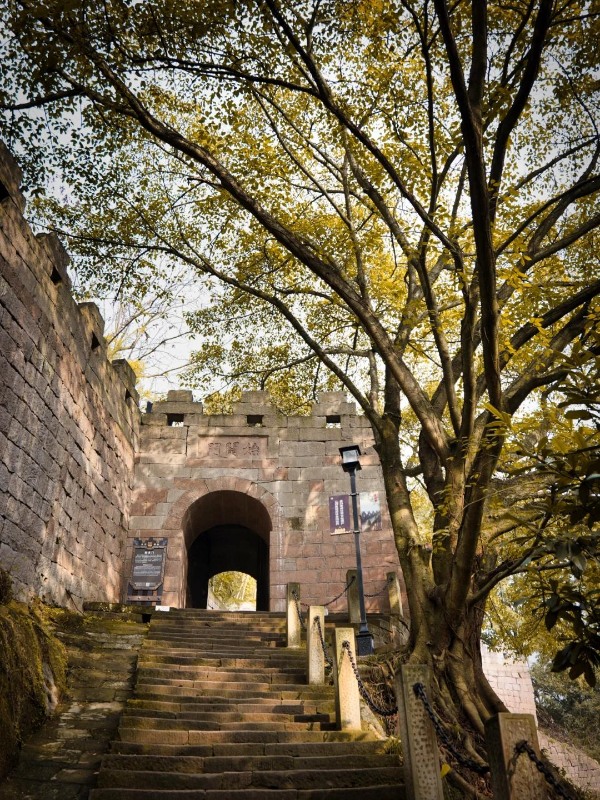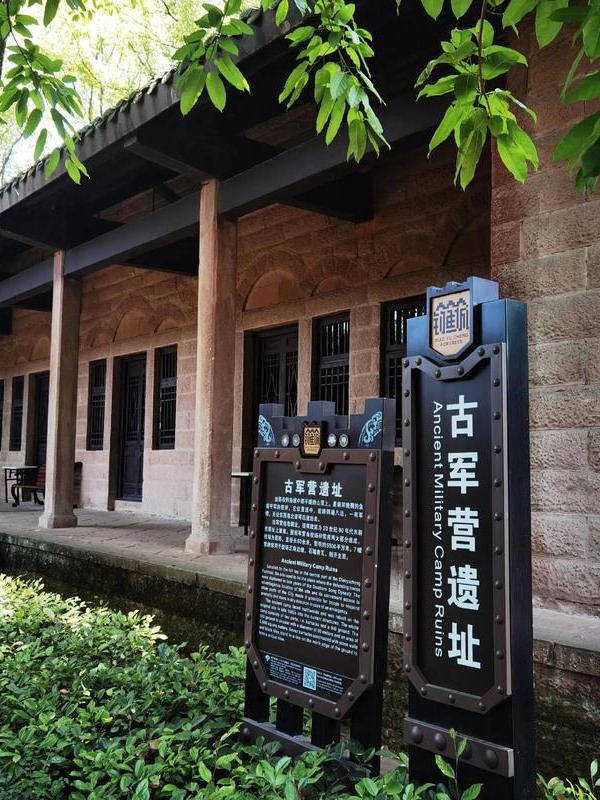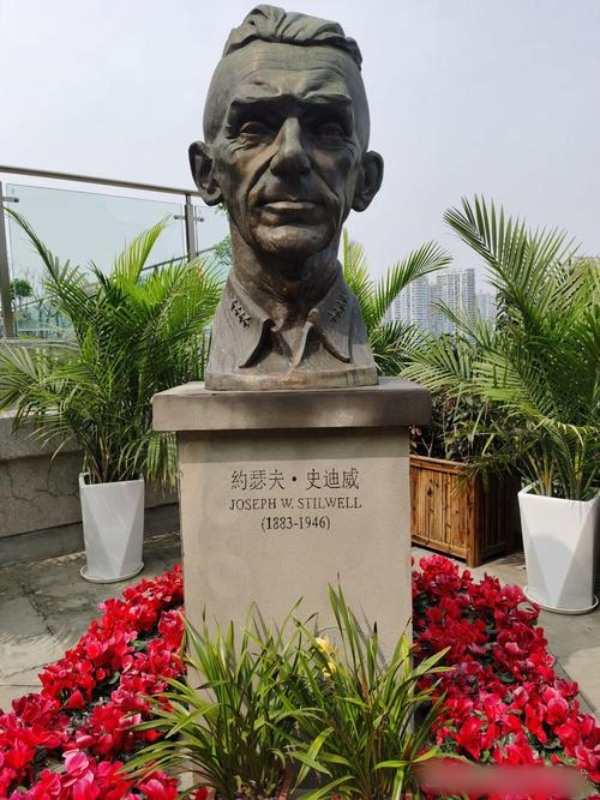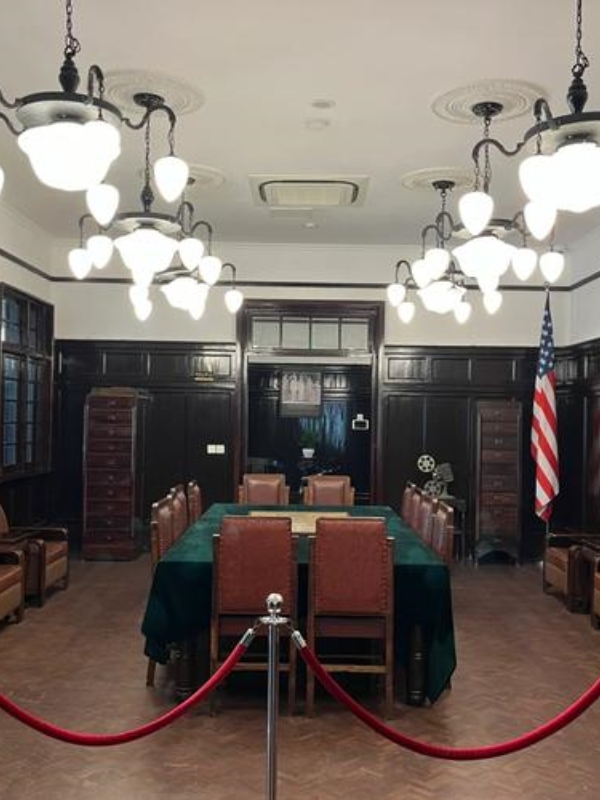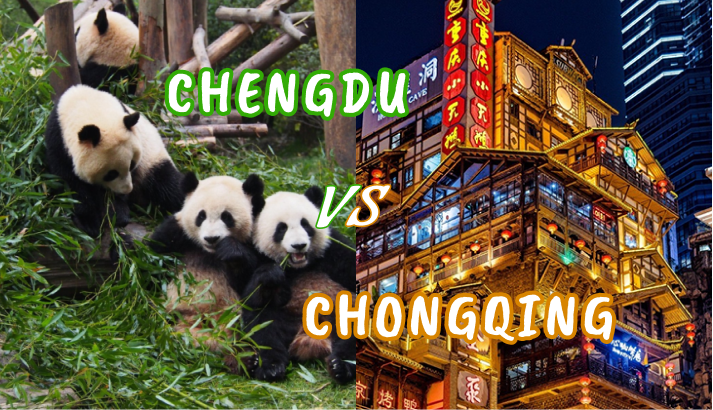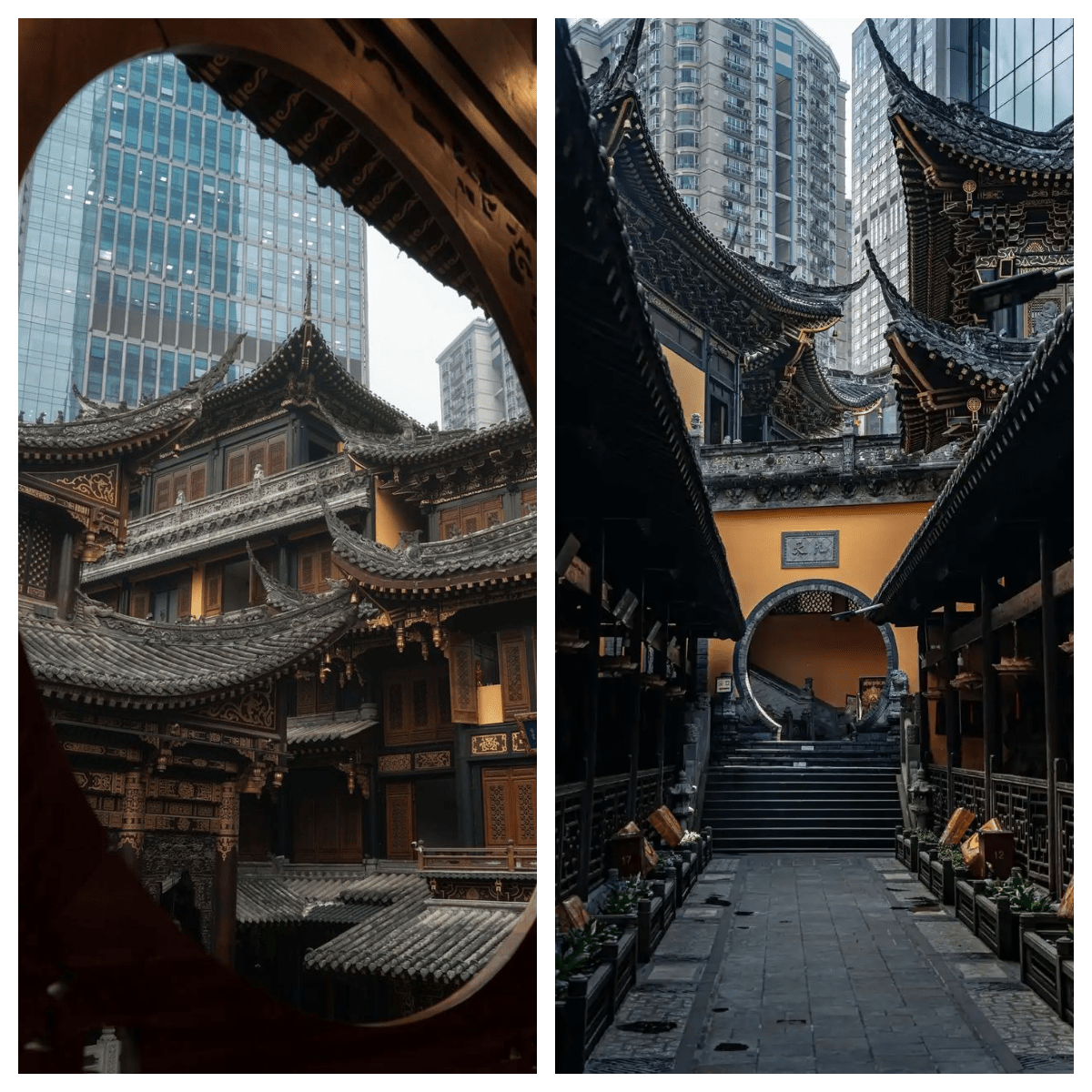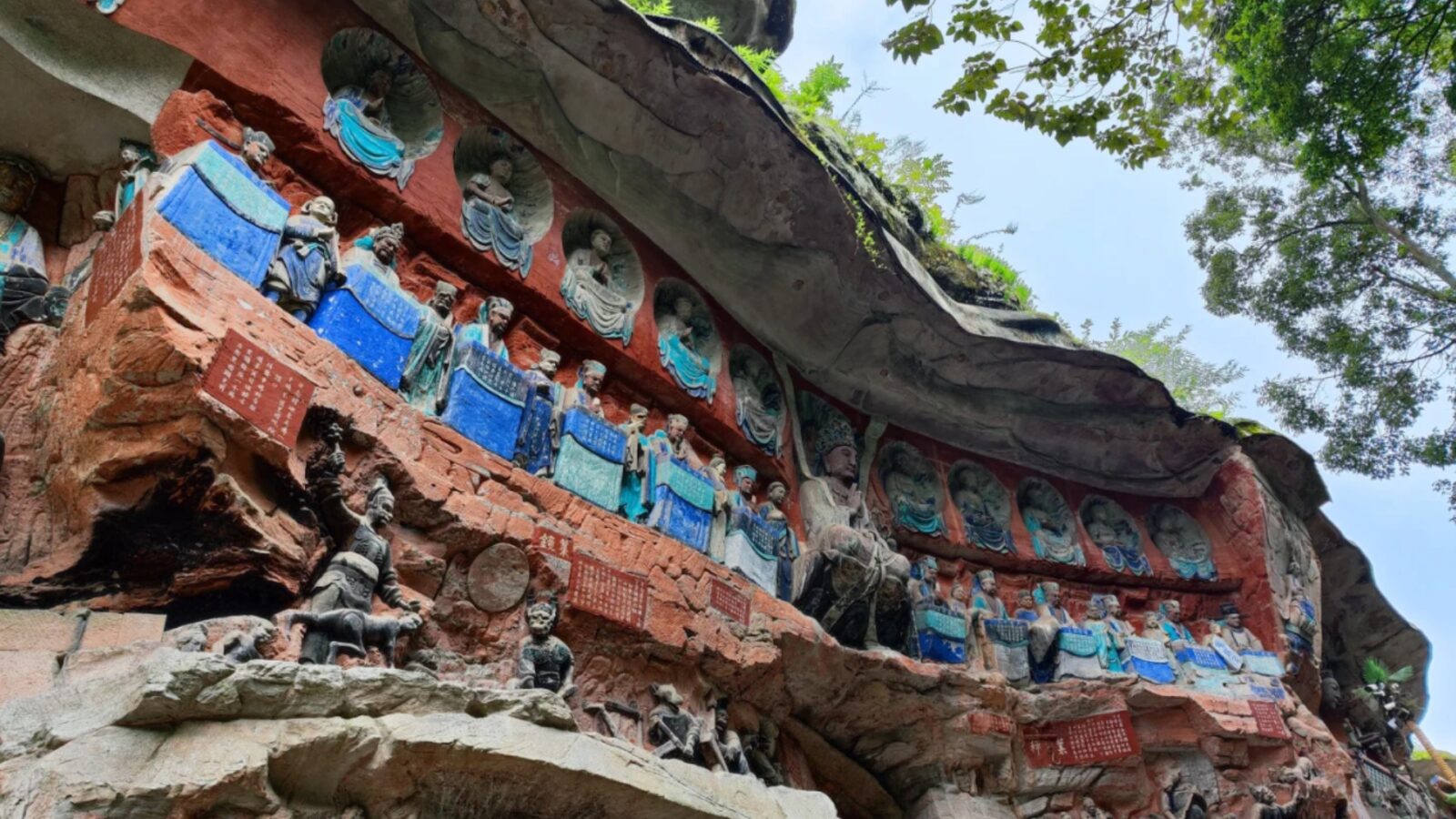
Dazu Rock Carvings
Chongqing, a megacity with a 2,000-year history and China's WWII wartime capital that survived 218 bombing raids, boasts raw and accessible historical sites—from time-honored ancient towns and wartime memorials to UNESCO World Heritage carvings and peaceful hilltop parks. Whether you have one day before a Yangtze cruise or a full week, these spots go beyond photo opportunities to let you engage with living history. After spending six days exploring the city, I’ve curated seven must-visit Chongqing historical sites in a logical order, plus the practical details I wish I’d known beforehand—transport routes, admission costs, and insider tricks that made my visits smoother. Dive in now and see how connecting with the city's unsilent past can turn your journey into something truly meaningful.
1. Ciqikou Ancient Town: A Ming Dynasty Village That Refuses to Disappear
- Night of Ciqikou Ancient Town
- Ciqikou Ancient Town
📍 Quick Info Ciqikou Ancient Town:
Type: Ancient town, living neighborhood, porcelain trading history
Address: Shapingba District (metro accessible)
Price: Free admission (some attractions charge separately)
Important: Avoid weekends; arrive before 9 AM to dodge massive crowds
People call Ciqikou a “tourist trap,” but that’s not the full story. The main street’s packed with vendors, sure—but turn into a side alley and you’ll find real life still humming. Ming-era homes, incense-filled temples, teahouses unchanged for decades. I once followed a grandma to her 1823 courtyard home; she served tea and showed photos from before tourism arrived. That chat felt more real than any museum tour.
Ciqikou’s heart beats in porcelain. Old kilns still smoke behind the hills, and one potter keeps the craft alive, laughing as tourists fumble at the wheel. Reddit travelers call this the “real Chongqing.” Go at 8 a.m., skip the crowds, start in the back lanes. That’s where history whispers—quiet, alive, and all yours.
Still debating between spicy Chongqing and chill Chengdu? Chengdu vs Chongqing Essentials: Panda Calm or Mountain Fire for Short Trips? will help you decide.
2. Liberation Monument: Where History Meets Modern Chongqing's Pulse
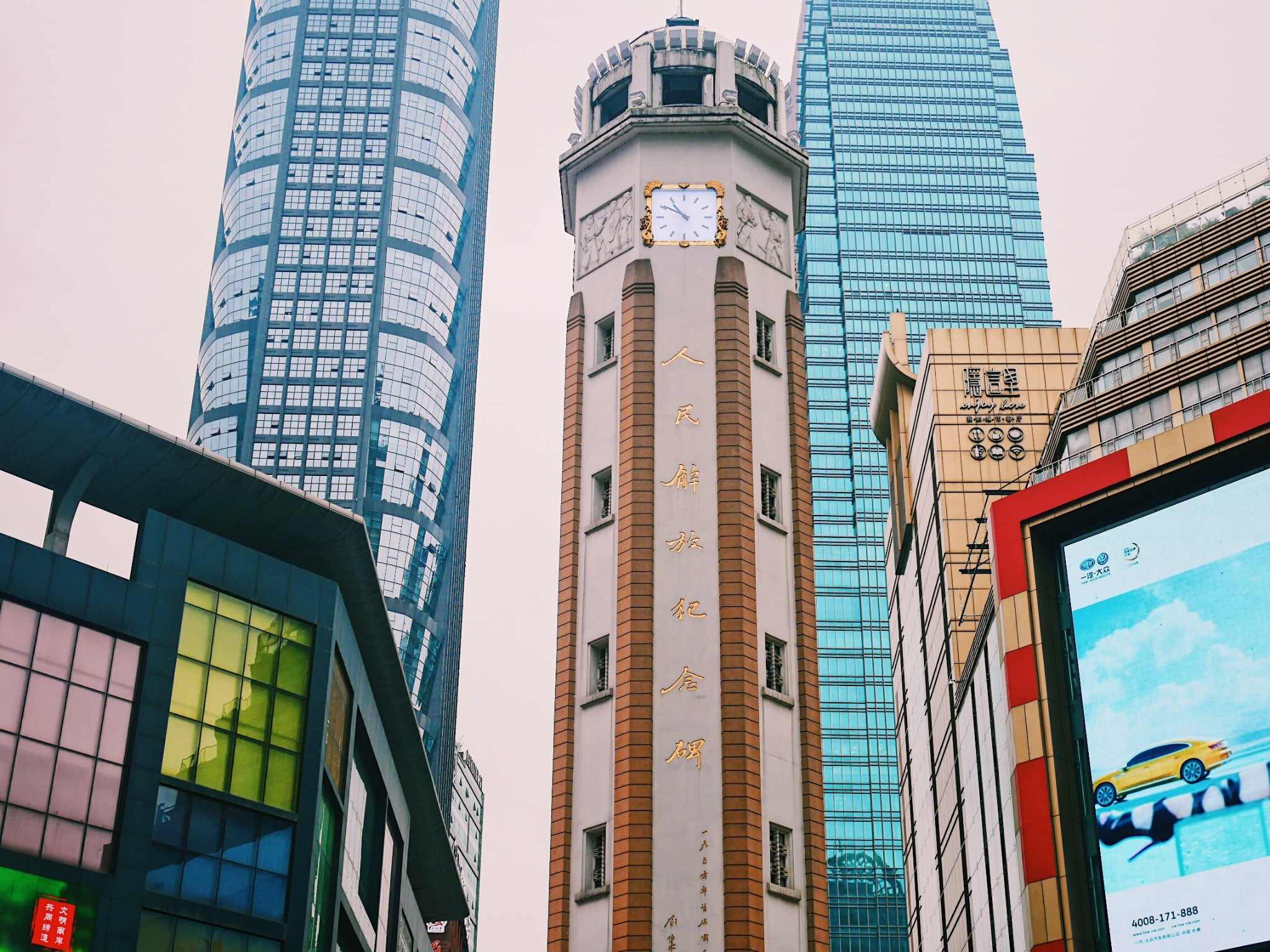
Liberation Monument
📍 Quick Info Liberation Monument:
Type: War memorial, city landmark
Address: Jiefangbei CBD, Yuzhong District
Price: Free admission
Important: Pickpockets in crowds, best visited at dusk
At first glance, Liberation Monument feels almost ordinary—a stone pillar boxed in by neon malls. But stand there a while, and you get why locals call it the city’s heart. It marks China’s WWII victory in 1945, the only major memorial in a city that never surrendered. That alone gives it weight.
Each visit feels different. Mornings bring old folks doing tai chi; afternoons, shoppers darting between Gucci and Prada; nights, a full-on light show where 1945 meets 2025. A grandma selling veggies nearby told me her father died in the bombings, and she’s kept her stall here for 35 years. That’s Liberation Monument—part memorial, part meeting point, still pulsing with life in modern Chongqing.
Pro Tip: Visit at sunset around 6 PM. The surrounding skyscrapers light up while the monument stays solemnly dark. That contrast tells the whole story of modern Chongqing. Don't skip this spot just because it looks touristy—it earned that popularity.
3. Three Gorges Museum: The Story Behind China's Most Ambitious Project
- Three Gorges Museum
- The Scene of Bomb Shelters
📍 Quick Info Three Gorges Museum:
Type: History museum, cultural center
Address: 236 Renmin Road, Yuzhong District
Price: Free (passport required)
Important: Closed Mondays; security check at entrance; allow 3+ hours
This museum catches everyone off guard. You walk in expecting dull displays and clunky translations—but instead, five full floors pull you straight into the Yangtze’s story. The Three Gorges Dam section breaks down the world’s largest hydro project with plain facts, not propaganda, weaving in real stories of families who had to move.
The WWII floor hits harder than you’d think—photos of dust-covered citizens leaving bomb shelters, letters from soldiers defending the city, and documents showing how Chongqing ran as China’s wartime capital. One TripAdvisor user nailed it: “Finally, a Chinese museum that doesn’t sugarcoat everything.” Give yourself four hours, not two. The Ba and Shu relics here—bronze, pottery, and weapons—could stand beside anything in Beijing.
Pro tip: download the museum’s app before you go; its English guide beats the wall text by miles. Wi-Fi’s free throughout, so no excuses. It’s easily the best free experience in Chongqing—quiet, honest, and surprisingly moving.
4. Dazu Rock Carvings: What Is the Most Visited Historical Site in China?
- 1,000-Armed Avalokitesvara
- Parinirvana Buddha
📍 Quick Info of Dazu Rock Carvings:
Type: UNESCO World Heritage Site, Buddhist carvings
Address: Baoding Town, Dazu District (90km from city center)
Price: ¥135 entrance + ¥30 audio guide
Important: No touching sculptures; arrive before 9 AM to beat crowds
Ask people what the most visited historical site in China is, and you’ll hear “the Great Wall” or “the Terracotta Warriors.” But locals and historians quietly point to the Dazu Rock Carvings—a UNESCO World Heritage site with more than 50,000 Buddhist statues carved into cliffs over two centuries. It’s not crowded, not loud—just astonishing.
Go on a weekday morning and you might walk alone among masterpieces. When sunlight hits the 1,000-Armed Avalokitesvara, each of the 1,007 hands feels alive. An elderly woman near the main grotto once told me her family has protected the site for seven generations. During the Cultural Revolution, villagers hid carvings under vines to save them. That’s love carved into stone.
The scale blows you away—the Parinirvana Buddha runs 31 meters long, and you’ll need to step back 20 meters to see it all. Plan at least three hours here. As one TripAdvisor reviewer wrote, “Makes Angkor Wat look like amateur hour.” Catch the early train from Chongqing North to Dazu (¥60, 1.5 hours), then bus K1 (¥3, 40 minutes). Leave by 7 a.m.—the carvings deserve your quiet attention before the crowds wake up.
Don’t stop at the historical sites—Top 10 Epic Things to Do in Chongqing: Cyberpunk Views & Hotpot Nights takes you straight into the city’s neon mysteries.
5. Eling Park: A Green Mountain Escape With Million-Dollar Views
- Eling Park
- Eling Park Scene
📍 Quick Info Eling Park:
Type: Medieval fortress, mountain military site
Address: Hechuan District (60km from city center)
Price: ¥80 entrance
Important: Requires serious fitness (700+ stairs), not wheelchair accessible, bring water
Eling Park doesn’t scream “historic” when you first walk in, but it’s perched on Chongqing’s highest hill—345 meters above where the Yangtze and Jialing Rivers meet. The Liangjiang Pavilion gives a 360° view that makes the city’s chaotic skyline feel almost poetic. For just ¥15, it’s easily one of China’s best-value viewpoints.
The park dates back to the Ming Dynasty, once a retreat for wealthy merchants escaping summer heat. Now it’s a peaceful maze of old pavilions, zigzag paths, and stone calligraphy brushed daily by elderly locals. Climb the pagoda at sunset—the two rivers glow, bridges light up, cruise ships drift by, and the city flickers awake for the night. Arrive 45 minutes before sunset, explore slowly, then stay till dark. This isn’t just a park—it’s Chongqing’s quiet way of saying goodbye to daylight.
6. Diaoyu Fortress: Where Mongolia's Unstoppable Army Finally Stopped
- Diaoyu Fortress
- Ancient Military Barracks Ruins
📍 Quick Info Diaoyu Fortress:
Type: Medieval fortress, mountain military site
Address: Hechuan District (60km from city center)
Price: ¥80 entrance
Important: Requires serious fitness (700+ stairs), not wheelchair accessible, bring water
7. Stilwell Museum: General Vinegar Joe's Headquarters and His China Legacy
- Stilwell Bust
- Stilwell Museum
📍 Quick Info Stilwell Museum:
Type: WWII museum, American-Chinese history
Address: 63 Jialing New Village, Yuzhong District
Important: Limited English signs; bring translation app; very few tourists
Making the Most of Your Historical Journey——One Day Speed Run (If That's All You Have)
Start at Three Gorges Museum when it opens at 9 AM. Spend 90 minutes on the highlights—WWII section and Three Gorges exhibits. Walk 10 minutes to Liberation Monument for a quick photo and coffee break (30 minutes). Metro to Ciqikou Ancient Town for late morning exploration (2 hours). Grab lunch at one of the street food stalls in the back alleys.
Afternoon taxi to Eling Park for views and garden stroll (1.5 hours). If you have energy remaining, visit Stilwell Museum on your way back downtown (1 hour). End at Liberation Monument again for the evening light show. This compressed itinerary hits five major sites without completely exhausting you.
Be realistic though—this pace means limited time at each location. You won't absorb much depth. Consider it a sampler that helps you decide what deserves a return visit someday.
If time’s on your side, how would you explore Chongqing in three days? Find out in 3-Day Chongqing Cyberpunk Glow Itinerary: From Neon Nights to Misty Mornings.
Practical Tips That Saved Me Hours
Transportation: Download the Chongqing Metro app. The metro system works brilliantly once you understand it. Line 2 and Line 3 reach most historical sites. Didi (Chinese Uber) costs less than taxis and shows prices upfront. Learn to say "历史景点" (historical site) to drivers.
Timing: Visit indoor sites (museums) during afternoon heat. Save outdoor sites for cooler mornings or evenings. Chongqing summers reach 38°C regularly. The humidity makes it feel worse. I learned this the hard way at Diaoyu Fortress.
Food: Don't eat at tourist-facing restaurants near major sites. Walk 10 minutes away and prices drop by half. Locals never eat at places with picture menus in English. Small noodle shops with only Chinese signs serve the best food anyway.
Photos: Bring backup phone batteries. Chongqing's sites drain batteries fast—you'll take more photos than expected. The vertical landscapes and dramatic lighting create constant photography temptations. I filled two 64GB memory cards during my six days.
Attitude: Embrace getting lost occasionally. Chongqing's confusing geography means wrong turns happen to everyone. Some of my best discoveries came from navigating incorrectly and stumbling onto unexpected sites. The city rewards explorers more than planners.
FAQ: Essential Questions About Chongqing Historical Sites
Q: What Is Famous About Chongqing?
Chongqing is known for its WWII history as China’s wartime capital, its steep mountain layout, and spicy hotpot culture. The Dazu Rock Carvings, Liberation Monument, and twin rivers define its image. Metro trains pass through buildings, and streets run on multiple levels. Locals joke it has two seasons: hot and hotter. Beyond landmarks, history feels alive—you can touch stone carvings and walk bomb shelters without barriers, making Chongqing a city that blends grit with memory.
Q: What to Do in Chongqing in 1 Day?
Start early at the Three Gorges Museum, then stroll to Liberation Monument for coffee. Take the metro to Ciqikou Ancient Town for snacks and history, then taxi to Eling Park for views. If time allows, add the Stilwell Museum before returning downtown for night lights. This loop covers key historical sites in Chongqing in one intense day. It’s fast, packed, but doable. One day gives you the flavor, though you’ll crave more time later.
Q: How many days do you really need for Chongqing historical sites?
Two to three days hit the main spots without fatigue. Dedicate a day to museums and downtown, another to Dazu Rock Carvings, and the last to Ciqikou or Diaoyu Fortress. With five days, you can wander slower and add temples or river rides. Most visitors balance history and food tours, making Chongqing historical sites more memorable.
Q: Can I visit Dazu without joining a tour?
Yes. High-speed trains leave hourly for about ¥60, taking 90 minutes. From Dazu Station, bus K1 reaches the carvings in 40 minutes for ¥3. Entry tickets are sold onsite, and local guides cost ¥100. Tour groups charge around ¥700 but rush visits. Go solo—you’ll save money and explore freely.
Q: Is Chongqing safe for solo female travelers?
Chongqing is one of China’s safest cities. I explored alone without issues. Violent crime is rare; scams or pushy vendors are the main concern. Stick to busy areas, keep valuables close, and avoid deserted spots late. Public transport is reliable and crowded but safe. Language barriers challenge more than safety does.
Q: Which site offers the best photography?
Dazu Rock Carvings shine in morning light. Eling Park at dusk shows skyline glow. Ciqikou’s alleys before 9 AM give moody shots. Liberation Monument glows under neon nights—bring a tripod. For photographers, Chongqing historical sites deliver both ancient textures and futuristic lights.
Q: Do I need advance tickets?
Most sites don’t. Free entry applies to major museums and Ciqikou. Only Dazu may require pre-booking during holidays. Buy train tickets a day or two ahead on Trip.com. Otherwise, walk-ins are fine—just avoid Golden Week crowds.
Q: Are English-speaking guides available?
They exist but are rare and costly. Three Gorges and Stilwell Museums have some. Dazu offers English audio guides for ¥30 or private ones for ¥400. Translation apps help a lot. Private guides via Klook cost more but simplify language gaps.
Q: How do I avoid crowds?
Visit weekdays before 10 AM. Skip weekends and holidays like October 1–7 or May 1–3. Summer heat keeps crowds away, especially at Dazu. Early hours mean clearer photos and calmer walks around Chongqing historical sites.
Q: How physically demanding are these Chongqing historical sites?
Most places involve moderate walking. Museums and Liberation Monument are easy. Ciqikou and Dazu have steps but manageable. Diaoyu Fortress demands stamina with hundreds of stairs. For seniors, stick to flatter attractions.
